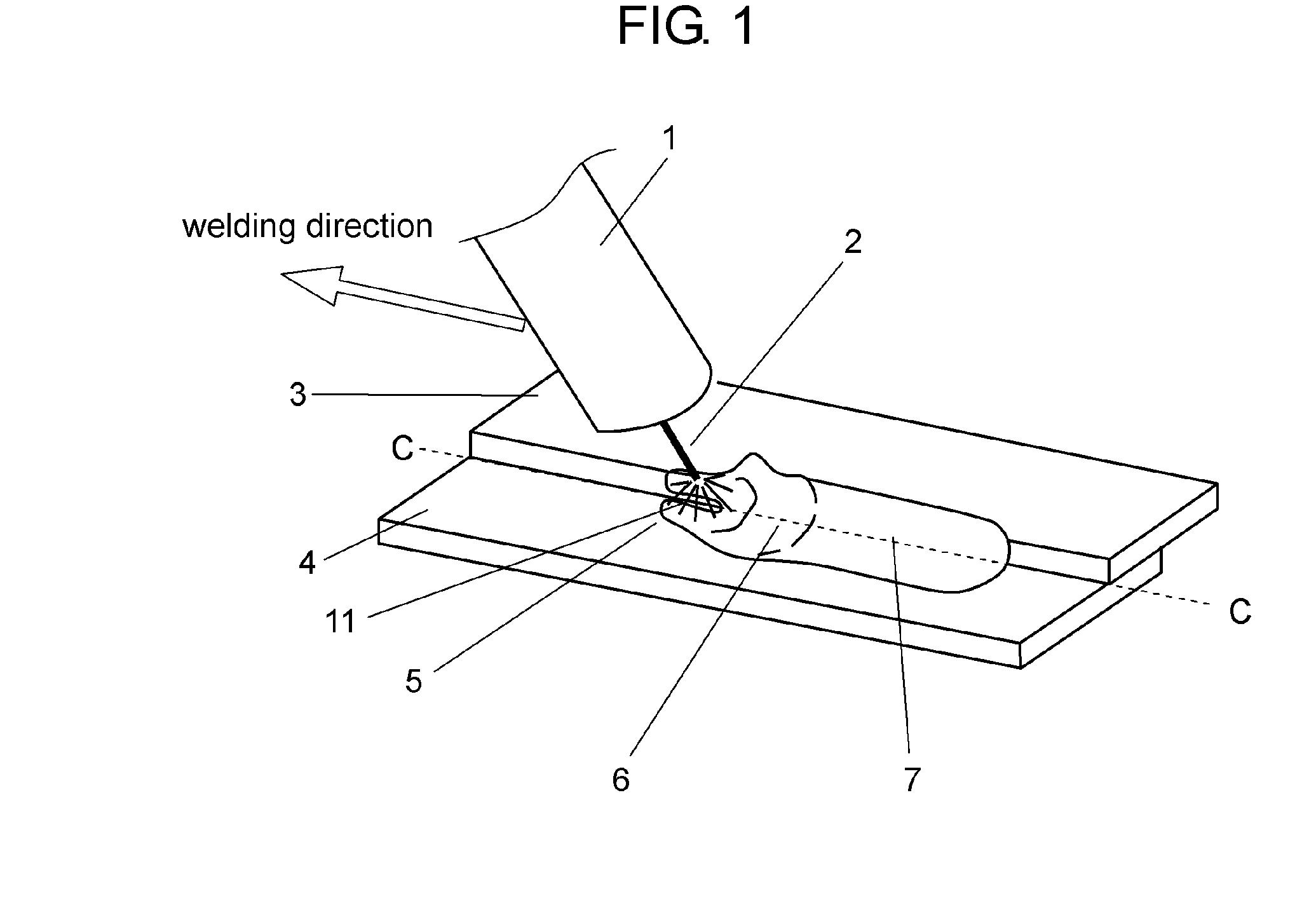Arc welding control method
- Summary
- Abstract
- Description
- Claims
- Application Information
AI Technical Summary
Benefits of technology
Problems solved by technology
Method used
Image
Examples
Embodiment Construction
Exemplary Embodiment
[0027]FIG. 1 shows a welding state in the arc welding control method in accordance with this exemplary embodiment. FIG. 2A is a sectional view (corresponding to the sectional view taken away line C-C of FIG. 1), seen in the horizontal direction, of a welding area in an arc period in accordance with a conventional arc welding control method. FIG. 2B is a sectional view (i.e., the sectional view taken away line C-C of FIG. 1), seen in the horizontal direction, of a welding area in an arc period in accordance with this exemplary embodiment. FIG. 2C shows a waveform of welding current in accordance with a conventional arc welding control method. FIG. 2D shows a waveform of welding current in accordance with arc welding control method of this exemplary embodiment. FIG. 2A relates to FIG. 2C, showing a welding state in first predetermined period 13 in FIG. 2C. Similarly, FIG. 2B relates to FIG. 2D, showing a welding state in first predetermined period 13 in FIG. 2D.
[00...
PUM
| Property | Measurement | Unit |
|---|---|---|
| Current | aaaaa | aaaaa |
| Speed | aaaaa | aaaaa |
| Current | aaaaa | aaaaa |
Abstract
Description
Claims
Application Information
 Login to View More
Login to View More - R&D
- Intellectual Property
- Life Sciences
- Materials
- Tech Scout
- Unparalleled Data Quality
- Higher Quality Content
- 60% Fewer Hallucinations
Browse by: Latest US Patents, China's latest patents, Technical Efficacy Thesaurus, Application Domain, Technology Topic, Popular Technical Reports.
© 2025 PatSnap. All rights reserved.Legal|Privacy policy|Modern Slavery Act Transparency Statement|Sitemap|About US| Contact US: help@patsnap.com



